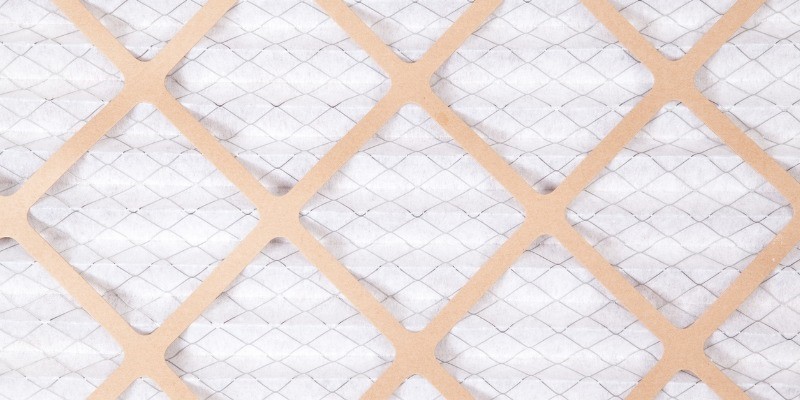
Furnace filters need to be replaced routinely in order for the furnace to keep working properly. Furnace filters may also remove debris from your air and improve your air quality. High-quality filters can remove very small airborne particles from your home’s air, while others may barely remove dust. To keep your furnace running properly and to keep your air quality high, it is important to choose your furnace filter wisely. Which is best for your furnace and family? This guide will show you how to compare furnace air filters and get the right size for your furnace.
There are a few terms you need to understand in order to be able to effectively compare furnace filters, including:
● MERV: Stands for Minimum Efficiency Reporting Value. It is an expression of how well the specific filter will work, at a minimum. Higher MERVs filter out a higher proportion of smaller particles.
● MPR: Some companies use the MPR rating system It is called the Microparticle Performance Rating, and measures only how well filters capture particles smaller than 1 micron. This is a more useful scale for air purifier filters than for furnace filters.
Which of these rating systems should you use? When available, you should use the MERV rating system. Manufacturers use it more widely across more products, so if you’re using MERV there is a better chance you’ll be able to make a fair comparison.
What about the material or type of furnace air filters? You have a few options, including:
● Electrostatic filters: Made of cotton or another electrostatic material such as; polyurethane, these filters are charged with electrostatic energy, so that they draw and trap particles. These are very rarely used on furnace filters because they can restrict air movement more than is acceptable.
● Fiberglass filters: Typically, fiberglass filters are not capable of picking up very small particles. They, therefore, tend to be of poorer quality than other filter types.
● Pleated filters: Also called media filters, these look like sheets of thin cardboard (or heavy paper) all stacked against one another. This gives them small pores. The pleats in these filters can catch a lot of particles, but they are still cost-effective.
Lastly, you also have a choice between disposable and reusable filters. Reusable filters must be cleaned and dried completely before they are placed back in the furnace. They will last about five years before they need to be replaced. For some, the hassle of cleaning, or the higher cost of reusable filters isn’t worth it.
Disposable filters generate more waste, but they are simpler, more convenient, and cheaper. All you need to do is take out the old filter and put the new one in. That said, some people don’t like adding more material than necessary to landfills, so they try to use reusable filters. It’s up to your personal preference.

There is a wide range of quality in furnace filters and you can compare them by their MERV rating. MERV usually expresses what size of particles the filter can effectively capture, and what percentage of those particles it can remove. Here is what each MERV rating means for you:
No, a higher MERV rating is not always better when it comes to your furnace filter. Filters with very high MERV ratings may restrict airflow too much for your furnace to operate normally. Your furnace needs a certain volume of air flowing through it because it uses that air to deliver the heat to your home. Plus, a lack of proper airflow can stress the furnace, cause strain to its parts, and ultimately lead to a need for repairs or a shortened lifespan.
So, you should look up your furnace model, call the manufacturer or your HVAC technician, to help determine the best filter for your furnace. They should have a maximum MERV rating that your furnace can handle without reduced efficiency. They may also have a minimum MERV rating that your furnace needs in order to achieve its full expected lifespan.

Within the range of filters that your furnace can handle, which should you choose? It depends mostly on the demands you’re putting on air quality in your home. Here are some things to consider:
That said, those with very high demands on their air quality may be better off buying a dedicated air purifier rather than trying to filter it out at the furnace. Air purifiers will do a better job of removing the contaminants that you’re concerned about from the air. And, with a dedicated air purifier, your furnace filter is likely to last longer.
Once you’ve chosen a type and MERV rating for your filter, all you need to do is find one that fits your criteria in the right size. The best way to do this is to go look at your current filter. It should have three dimensions listed on the side: length, width, and thickness. Some common filter sizes include:
While the most common sizes of filters are one inch wide, two-inch is also common, and up to five inches is possible. Why does thickness matter? Thickness is an interesting dimension because it can be changed, unlike width and length. You can have your HVAC professional make more room in your ducts to fit a thicker furnace filter.
Assuming you have the room and that your furnace model can handle thicker filters. And, with a thicker filter comes a few benefits. Primarily, a thicker filter will last longer. It may also perform better under some circumstances.
A furnace filter can be your primary defense against poor air quality, while also keeping your home warm. For more information on the best furnace filter for your home’s needs contact the experts at Appleby Systems.
Sources:
https://www.consumerreports.org/cro/air-filters/buying-guide/index.htm
https://actionfurnace.ca/is-there-really-a-difference-between-the-different-type-of-furnace-filters/
https://www.furnacefilterscanada.com/furnace-filters-sizes/
https://www.hvac.com/blog/furnace-filters-101/
https://www.applebysystems.ca/latest-news/common-furnace-filter-sizes-and-where-to-buy-them/
